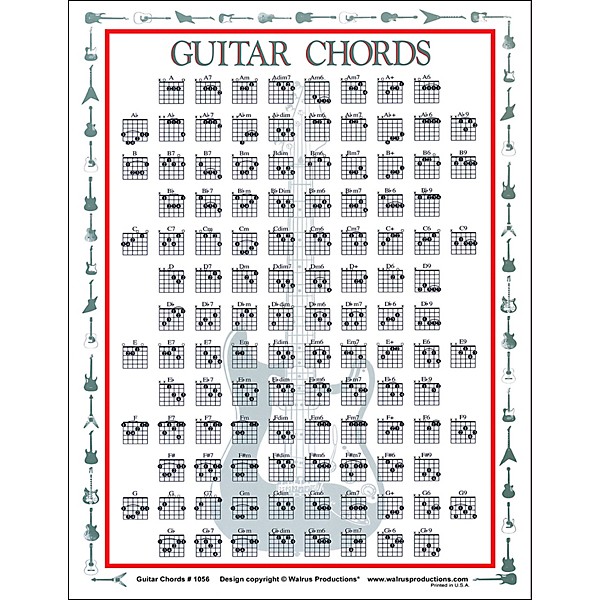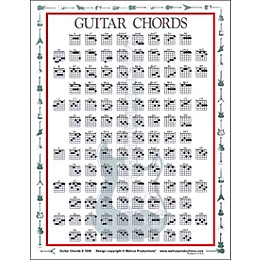- Popular Brands
Walrus Productions Guitar Chord Mini Chart
 Reviews
Reviews
4.4
15 Reviews
100%
of respondents would recommend this to a friend
Most Liked Positive Review
Good for beginners
I got this as a gift for one of my guitar students, and she loves it! It's going to help her so much with her choir memorization. Only one mistake, which is the C major chord. It's written out as C/G, but besides that, good product for beginners!
Most Liked Negative Review
Can't use it!
While the chart looks nice, you can't use it! It shows where to place your fingers, but doesn't show which strings are played. Not all chords play all of the strings! I bought two of these at our local store and they're worthless to us.
Reviewed by 15 customers
Great and easy to use teaching tool.
Verified Buyer
submitted5 months ago
byDrew
fromAlaska
Submitted as part of a sweepstakes
Easy to use quick reference for helping to teach beginning guitarists
Useful cord chart
Verified Buyer
submitted8 months ago
byStephen
fromOviedo, Florida
Submitted as part of a sweepstakes
I bought this chart for my grandson and it had been really helpful, to identify the cords.
Great reference tool... but a bit small for my eyesight!
Verified Buyer
submitteda year ago
byJeff
fromAliso Viejo, CA
Submitted as part of a sweepstakes
I keep it by my area where I practice and also to practice cords I am not familuar with.
Guitar Chords Chart
Verified Buyer
submitted4 years ago
byAnthony
fromNewington, CT
This chart is easy to use. It explains many chords on the guitar and shows where they are located on the frets. The dotted numbers reflect the position of your fingers, with the index finger being number one and so on.
Good product
submitted5 years ago
bySaul V
fromEdcouch, TX
Good for referencing and learning new chords. It is the size of a standard sheet of printer paper but it is sturdy (thick) and lamanated.
Chord chart looks great and comes in handy
submitted5 years ago
byDan R.
fromSan Francisco, CA
Great price!
 Q&A
Q&A
Have a question about this product? Our expert Gear Advisers have the answers.
submitted3 months ago
asked byGreg
fromPheonix Az
How do you know if your on the first or seventh fret or 12th
How to Tell Which Fret You're On Look at the Number or Label: Some charts label positions directly with small numbers next to the chord diagram (e.g., "5" for 5th fret). The Walrus Productions Mini Chart generally shows open-position chords by default (1st–3rd fret), unless otherwise labeled. Check for Open Strings (O) or X's: If the diagram has open circles ("O") above the top line, those strings are played open, which means you're likely in open position (1st fret area). An "X" means that string is not played. If no open strings are shown and the diagram starts higher up the neck, it may show a barre chord, which indicates a moveable shape. Watch for Barre Chords or Shifted Shapes: A solid bar across all strings in the diagram typically indicates a barre chord — the fret number for the barre will usually be labeled beside the chart (e.g., 5 = barre on the 5th fret). Moveable chords like E-shape or A-shape barre chords start higher up the neck and the chart will usually note the starting fret. Compare to Your Fretboard: Count the frets from the nut (headstock side) to identify where the shape is intended to be played. The 12th fret is marked with double dots on most guitars and serves as a helpful landmark.\ Tip: Learn Common Position Markers Most guitars have dots at the 3rd, 5th, 7th, 9th, and double dots at the 12th fret. If you're reading a chart that doesn't specify the fret number, use the chord name to figure it out: Open chords like C, G, D, A, E are played near the nut (1st–3rd fret). Barre chords for, say, a B major, will usually start on the 7th fret if using an E-shape.






